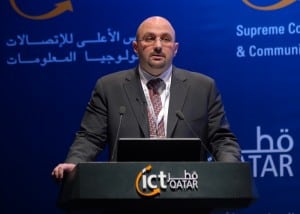Latest News
[Via Satellite 08-27-13] Last week, Arabsat and Es’hailSat, the Qatar-based satellite company, announced a strategic partnership that would promote closer cooperation between the two companies and strengthen the reach and penetration of the 26 degrees east hot spot neighborhood for TV broadcasting.
Under the terms of the agreement, Es’hailSat will acquire the rights to 500MHz of premium Ku-band bandwidth at this hotspot. The company’s second satellite, Es’hail 2, will use these frequencies and will be designed to provide DTH and other telecommunications services.
Jawad Abbassi, president, Arab Advisors, a key local telecoms consultancy in the region, told Via Satellite that the deal could possibly lead to more collaboration between the two companies. “The Arab world has two main hot spots for TV: 7 west (NileSat) and 26 east (Arabsat). Being on a popular hot spot for TV viewing makes, it is easier for a new satellite operator to gain traction among TV viewers in the region,” he said. “According to Es’hailSat and Arabsat, this agreement will increase Es’hailSat’s penetration of 26 degrees east hot spot, increase Es’hailSat’s capacity at the 25.5/26.0 east hot spot, and enhance the in-orbit backup capability. The agreement will also allow for mutual in-orbit backup between Es’hailSat and Arabsat in the future.”
One intriguing question is what the dynamic of the Middle East satellite market will be going forward. Will Es’hailSat be more partners or competitors going forward? “The launch of the Es’hailSat’s new satellite will increase the satellite capacity in the region. More capacity by multiple operators means more competition. The Arab Advisors Group believes that this might lead to enhanced competition between the communication satellite companies. We believe the introduction of an additional player in the satellite TV market in the region will intensify competition, and provide customers with more choices for their telecommunications and entertainment needs. We believe this will especially be reflected in the emergence of more HD and 3-D channels in the region,” Abbassi said.
Abbassi believes the growth in the Middle East satellite market remains strong. “The satellite market is witnessing continuous growth in the region. The number of satellite channels that broadcast in SD had a major growth of almost 600 percent between January 2004 and May 2013. We expect this trend to continue in the future, especially with the entrance of new players to the region’s satellite market including YahLive and Es’hailSat,” he said.
Get the latest Via Satellite news!
Subscribe Now